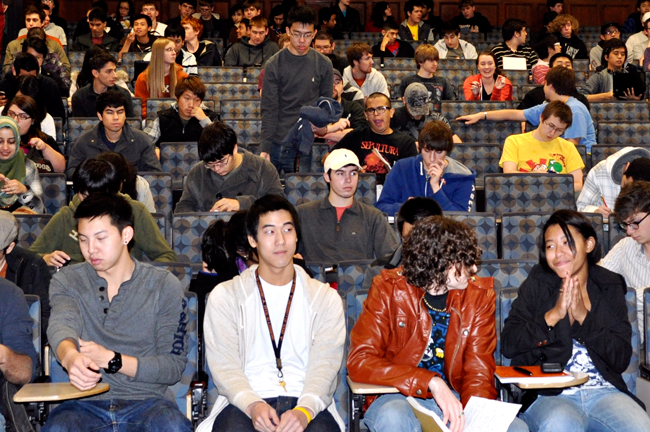Using technology to enhance introductory courses has helped students earn better grades, said representatives of the Course Transformation Program.
The program, which began in spring 2010, aims to increase success rates in classes by adding more educational technology and added online educational features to the classes students typically take in their first few semesters. Last spring, Biology 311C/311D, Chemistry 301 and 302 and Statistics 302 all started selected piloted sessions of the courses.
“I do think one of the great things about what we're doing is it can help make the big class experience feel smaller,” said Gretchen Ritter, director of CTP.
The CTP hosted a panel Tuesday which reported results and feedback from the first year of the program.
The attendance rate for Statistics 302 has gone up from previous years to 92 percent after starting the program, said Cathy Stacy, the Statistics and Scientific Computation faculty leader for the program. She said the percentage of Ds and Fs on the final exam also fell from 33 to 15 percent but the final exam itself was essentially the same from those prior to the class’s redesign.
“The area on the final where we saw the greatest improvement was calculation,” Stacy said. “It is essentially what we removed from the lecture periods and left to the students to do on their own.”
Ritter said the courses in the program are using online materials to help teach the class. All the courses have moved some materials previously taught in lectures to online assessments and readings, she said.
“By taking some of the material that you may traditionally cover in lecture to outside of class, you can do different things inside of class,” Ritter said. “You can make the classroom experience itself a more engaged environment.”
Chemistry 301 and 302, for example, places skills students can learn on their own online on Quest and on the class website. The course website has all the material content resources, along with videos of every lecture.
David Vanden Bout, the program's chemistry faculty project leader, said last semester the website received about 61,000 hits, with more than 10,000 visitors spending at least 30 minutes on the site throughout the previous semester.
“The website was a huge hit, for people not just in our class but obviously it's leaking over to other sections of 301,” Vanden Bout said. “For all the surveys that we did, this was students’ No. 1 favorite thing about the class.”
Ritter said UT was committed to a face-to-face learning experience, so the University will not move to a primarily online-only set of courses.
“But we are really headed much more in the direction of a hybrid model where in fact we are trying to make the inside the classroom experience more engaged,” Ritter said.
Architectural engineering sophomore Amanda Nogay, who took a Chemistry class last semester that was not one of the program's piloted sessions, said online resources are a good supplement, but they can not replace in-class lectures.
“There is also no substitute for picking a professor's brain,” Nogay said. “While the Internet has a bounty of resources, only the professor knows exactly what he wants you to get out of the lesson.”
Printed on Wednesday, January 25, 2012 as: Integration of technology enhances student learning





















